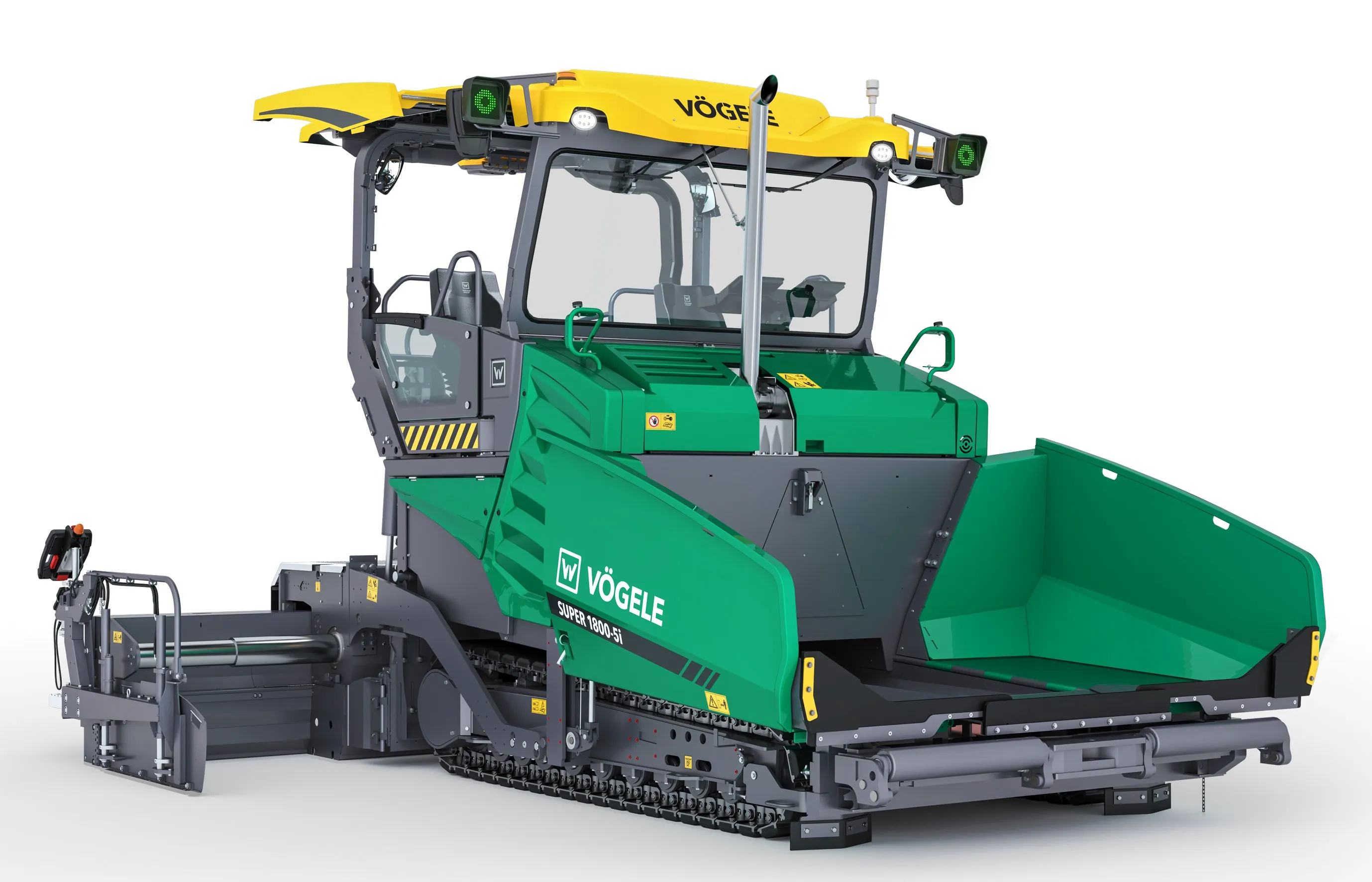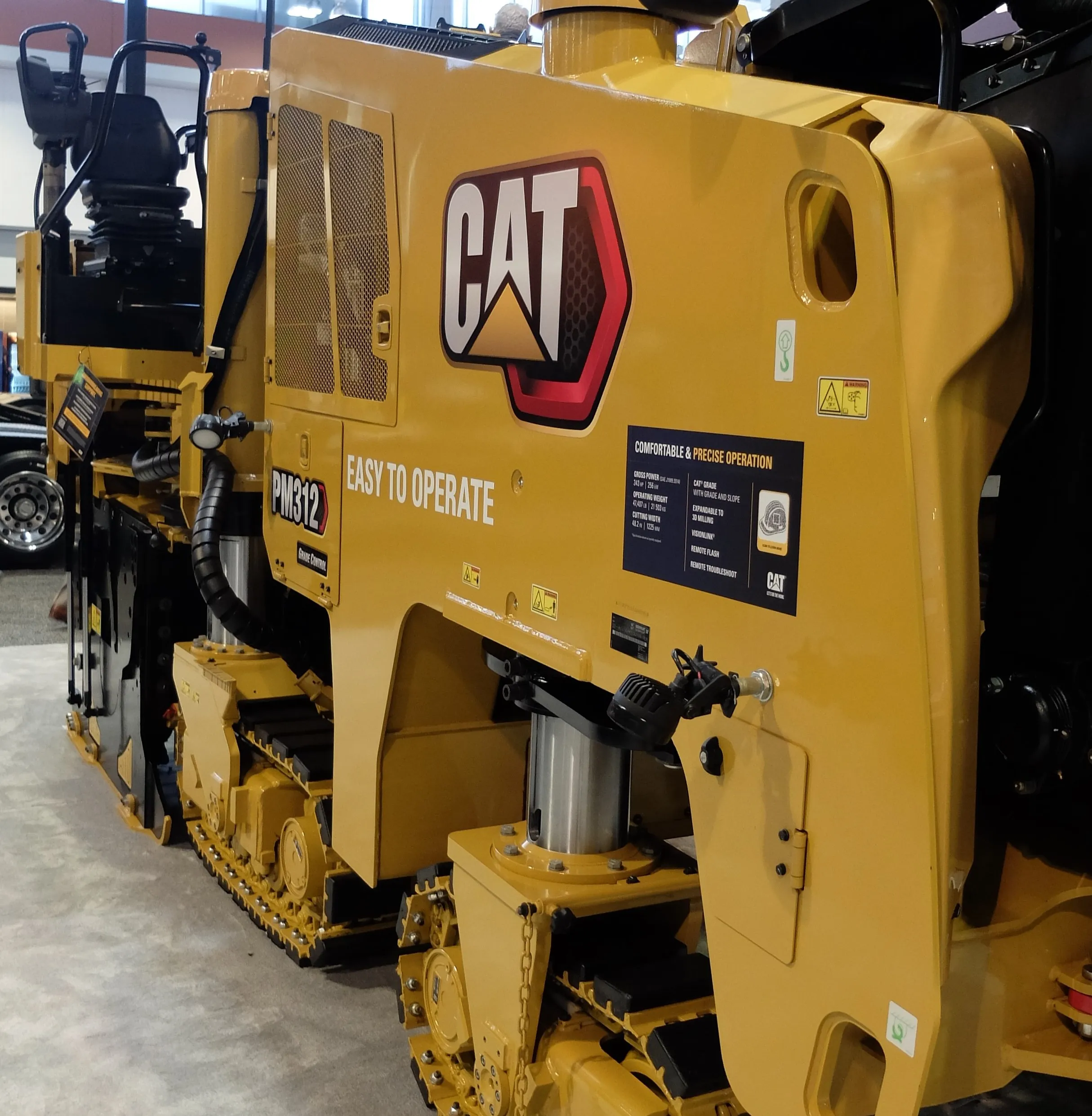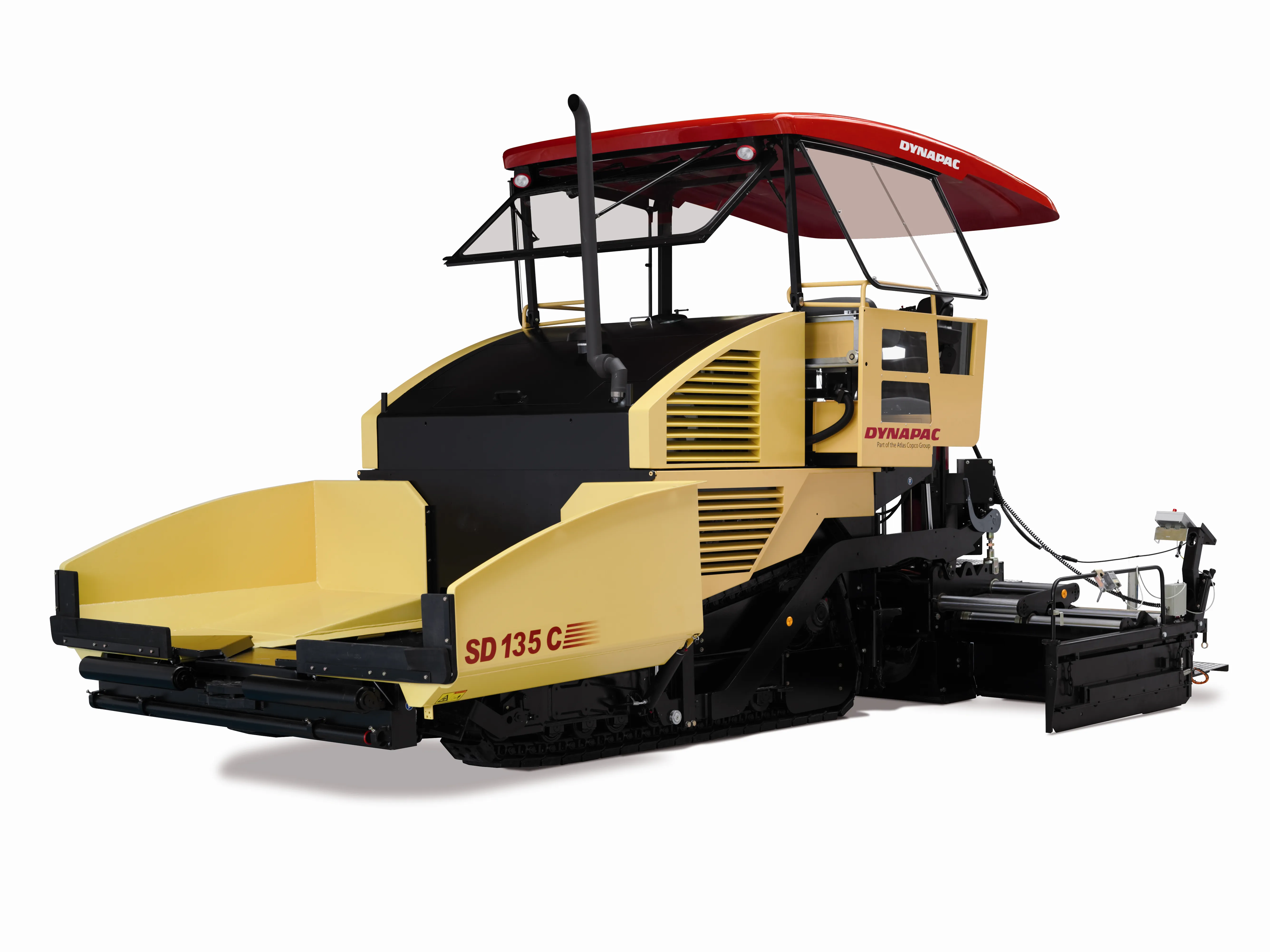
Vögele has launched a new model for its Dash 5 range, offering paving widths of 2.55-10m, high performance, compact dimensions and versatility.
The compact SUPER 1800-5(i) is 6.15m long and offers a laydown rate of 700tonnes/hour. The machine new assistance and automatic functions, improved material management, a sustainable drive concept, additional comfort features and a new lighting system.
According to Bastian Fleischer, Product Manager at Vögele. “We have considerably improved the user-friendliness, sustainability, economic viability and automation in this new generation of pavers.”
At the heart of this new generation machine is a new ErgoPlus 5 operating system where, the manufacturer says, “The focus is on the users: Compared to the ‘Dash 3’ version, the paver operator’s console offers improved visibility and better comfort and ergonomics.
“Vögele has simplified the operation of individual functions, improved the design, reduced the construction height to increase legroom and integrated additional storage options for mobile phones or similar. The SUPER 1800-5(i) also offers more precision steering than its predecessor due to the Smartwheel. And the optional ‘Premium Touch’ display screen allows users to easily monitor and control existing and future digital solutions.
The SUPER 1800-5(i) also has additional assistance and automatic functions to support users. For example, Niveltronic Plus Assist automates the laying of both crown and transverse profiles.
The operator sets the incline of a target point, and the machine takes over by gradually approaching this value. An operator no longer needs to adjust the incline by hand, improving performance and especially for changing profiles. The screed width can be automatically controlled along a tensioned wire with the new Edge Control system. The automatic screed width function ensures that the edge and pave width of the screed remain constant when there is no tensioned wire at an exit or entrance.
The optimised drive tech is said to lower fuel consumption and CO₂ emissions. The firm says that the new four-cylinder motor uses less fuel but delivers the same power, due to the optimised Vögele EcoPlus low-emissions package. In particular, the speed-controlled fan calculates rpm more accurately and helps lower noise emissions.
The reworked control of the material transport system allows the auger and conveyors to communicate with one another, ensuring that material feed is more consistent. The optional Power Tunnel also ensures an optimum material height in front of the screed plate.









